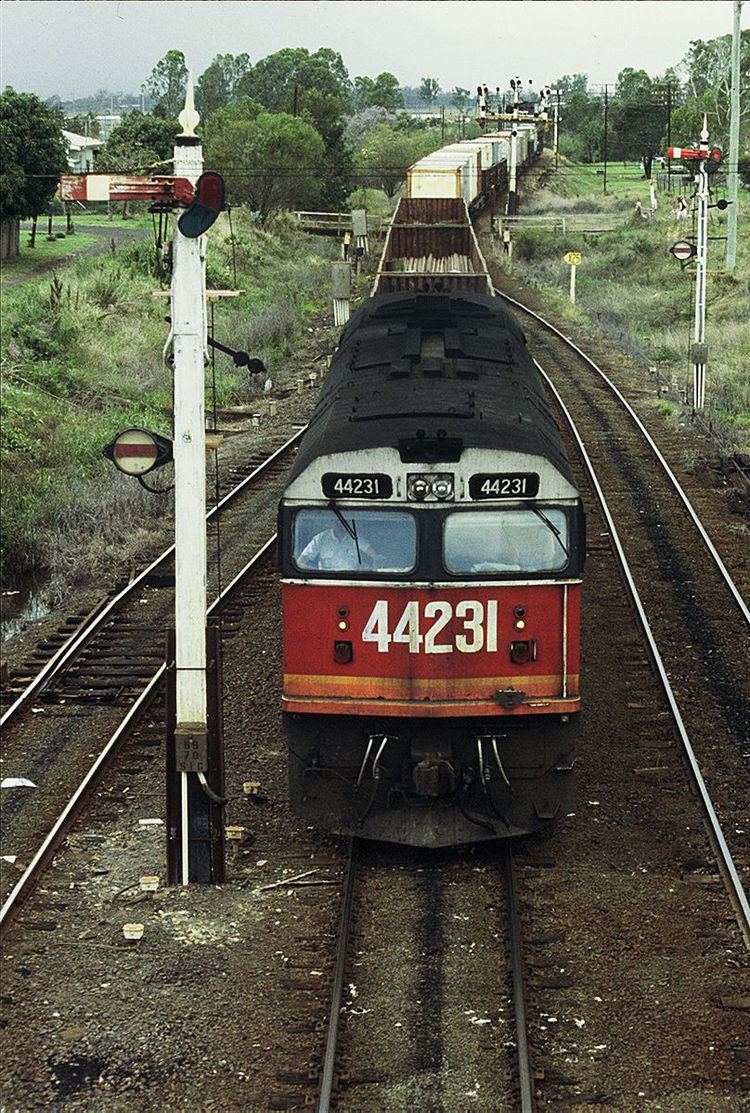Build date 1970-73 | Model Alco DL-500G Total produced 40 | |
 | ||
Serial number Alco G-6045-01 to G-6045-40 | ||
The 442 class are a class of diesel locomotives built by AE Goodwin and Comeng, Auburn for the New South Wales Government Railways between 1970 and 1973.
Contents
History
The 442 class were ordered and operated by the New South Wales Government Railways. They were the second generation of Alco units to be built, and were used on both main freight and passenger service in New South Wales. Since entering private ownership they have operated across Australia. They are identical to the South Australian Railways 700 class. They were nicknamed Jumbos, due to their 1971 delivery coinciding with that of Qantas' first Boeing 747s.
Construction
The 442 class were built from 1971 to replace the 40 class locomotives dating from 1951, as they could not be economically rebuilt to modern standards. Twenty locomotives were initially ordered from AE Goodwin, the contract stipulating that the 40 class be accepted as a trade in, with some parts from the older units used for the new locomotives. The contract was later extended by 20 units.
The first locomotive was completed in October 1970 but was rejected due to rough riding concerns in testing, with five months passing before it was finally accepted after modifications to the bogie design. After AE Goodwin was placed in administration it was sold to Comeng who completed the last six locomotives with a Mitsubishi alternator in lieu of a generator.
In service
The 442 class operated mainline services across the state. In 1985 some (including 23-27, 29 & 30) were fitted with V/Line radios to allow them to operate services through to Melbourne. This ceased in 1987 with those fitted being sent to Melbourne to have the equipment removed.
By the end of their careers all were based at Broadmeadow Locomotive Depot and mainly operated on the North Coast and Main North lines.
Disposal
Following the delivery of new 82 and 90 class locomotives most were withdrawn in 1994. In December 1994, nineteen were sold at auction:
A locomotive shortage saw six reinstated by FreightCorp in late 1995. After being used as shunters in Sydney, the last were withdrawn in March 1998. One of these was earmarked for preservation and placed in the care of the New South Wales Rail Transport Museum.
Rebirth as JL and GL classes
In preparation for the sale of FreightCorp the remaining locomotives were sold to Great Northern Rail Services, Victoria in 2001. Five were overhauled and returned to service as the JL class. All were sold to Chicago Freight Car Leasing Australia, who contracted UGL Rail, Broadmeadow to remanufacture 12 units with refurbished General Electric C30-7A components recovered from withdrawn Conrail locomotives. They were reclassified as the GL class with all completed between June 2003 and October 2004.
This involved the locomotives being stripped to the bare chassis and remanufactured from the ground up, the only equipment retained being the bogies, main frames and fuel tanks. The original Alco 12-251C engines and AEI generators were replaced with fully overhauled GE 7FDL-12 engines and alternators. New cabs with desk-top controls and improved collision protection and bodies that retained a dual-cab configuration were fitted. The JLs have since resumed their original numbers with two sold to Southern Shorthaul Railroad.
The GLs have been leased to a variety of operators including Bowmans Rail, El Zorro, Freight Australia, Freightliner, GrainCorp, Independent Rail of Australia, Pacific National, Aurizon and Qube Logistics. Two were repainted in Freightliner livery in 2010, the remainder have remained in CFCLA's silver and blue livery.
